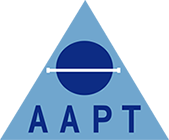News
Excess Death Planning & Voluntary Registration Workshop 6th November 2009
AAPT Member Sarah Purdy gives a report from the latest event organised by the London & South East AAPT Regional Network held at Westminster City Hall.
The day was broken into two parts. The first half of the day concentrated on excess death planning (quite handy as we’re all expecting to circum to the ravages of Swine flu!).
To enlighten us on this subject was guest speaker Magdelena Koluzs, who is the Emergency Planning Officer for Southwark, and has also been seconded on to the London Resilience Team (LRT). The LRT consists of the Government, the Major of London and other key agencies such as the emergency services. Magdelena spoke about the role the Home office has had in organising for mass fatality. She explained there are three phases of planning and what they mean.
Phase 1
Local measures. Mortuaries put together their own contingency plans such as hiring temporary refrigeration, buying extra fridge trays for multi-tiered racking etc.
Phase 2
Mortuaries work together with other service providers such as Funeral Directors and Crematoria to ensure there is rapid turn around of service.
Phase 3
Relaxation of legislation. This would only apply in a worst case scenario where mortality rates across the regions exceed viability.
The Government have told Trusts and Local Authorities to begin planning for phase 2. A lot of Technologists attending the day did not know that this is probably already happening in their own Trusts and/or with their own Local Authorities. As a group we all agreed that we should have a voice in this planning as we know how mortuaries operate, understanding service strengths and weaknesses.
Magdelena advised senior members of each mortuary to ask their managers about escalation plans, business continuity and mutual aid agreements in planning for excess deaths. It was also noted that some NHS Technologists had already researched emergency plans, only for higher management to dismiss them for financial reasons. It was suggested that it would be advisable to get this formally minuted, avoiding possible repercussions.
For those of us who have tried to obtain Government advice via the internet, the official guidance is very obscure. The Home Office is aware of this and hope to have firm guidance in place for mortuaries by the end of the year. A very handy local authority toolkit with helpful advice on planning was highlighted to us by Magdelena and is was sent to us electronically by e-mail.
After we indulged in a buffet lunch that was sponsored by Simon Chappell of Chemsol ltd, it was time for the second half of the day.
With the exciting news that the Certificate and Diploma are being superseded with new qualifications; possibly coming into effect next year, the astute amongst us will be taking steps now to become VRC (Voluntary Registration Council) registered. This will ensure that we have a smooth transition, leaving behind the anxiety of studying for and sitting brand new exams. The importance of documenting CPD (Continued professional development) activity was spoken about. This will amass credits which are needed as evidence in part of the VRC form.
CPD really isn’t as daunting as you think. Credits can be accrued in a variety of different ways. For those of us who work in NHS hospitals, attending yearly mandatory training courses adds to those points. A CPD folder also looks fabulous produced at your next appraisal! Casting my mind back to past discussions on the forum, Technologists (myself included) have voiced their apprehension about completing ‘section 6’ of the VRC form. This is where a possible 6 essays are required for each subsection pertaining to your discipline, and the section most of us are concerned about. A workshop was held with those who are already registered giving helpful advice to VRC virgins, and letting us read their entries for section 6 as guidance.
A lot of us were surprised to learn that the whole of this section with all of the possible 6 sub-settings must cover a MAXIMUM of four A4 sides of paper. Not too overwhelming after all then!
“The guidance mostly focused on the completion of section 6, this proved to be very beneficial as becoming VRC registered would put us on the right path for professional registration like that of HPC (Health Professional Council) and show true professionalism in our job roles. It would show the public we are serious, dedicated scientists, up to date with our skills, knowledge and the latest legislations and procedures. This would also provide some confidence for the public and employers, as APTs would be answerable to a Code of Conduct. On the whole, all that attended felt positive about completing their applications and becoming VRC registered in the near future.” Louise Day
All in all, the day was a great success and very worth while. It made me feel a lot more confident and knowledgeable about filling in the VRC forms, and other Technologists I spoke to afterwards felt the same. We all received our attendance certificates worth 5 CPD credits, and a wonderful Chemsol goody bag courtesy of Simon.
Sarah Purdy
November 2009
